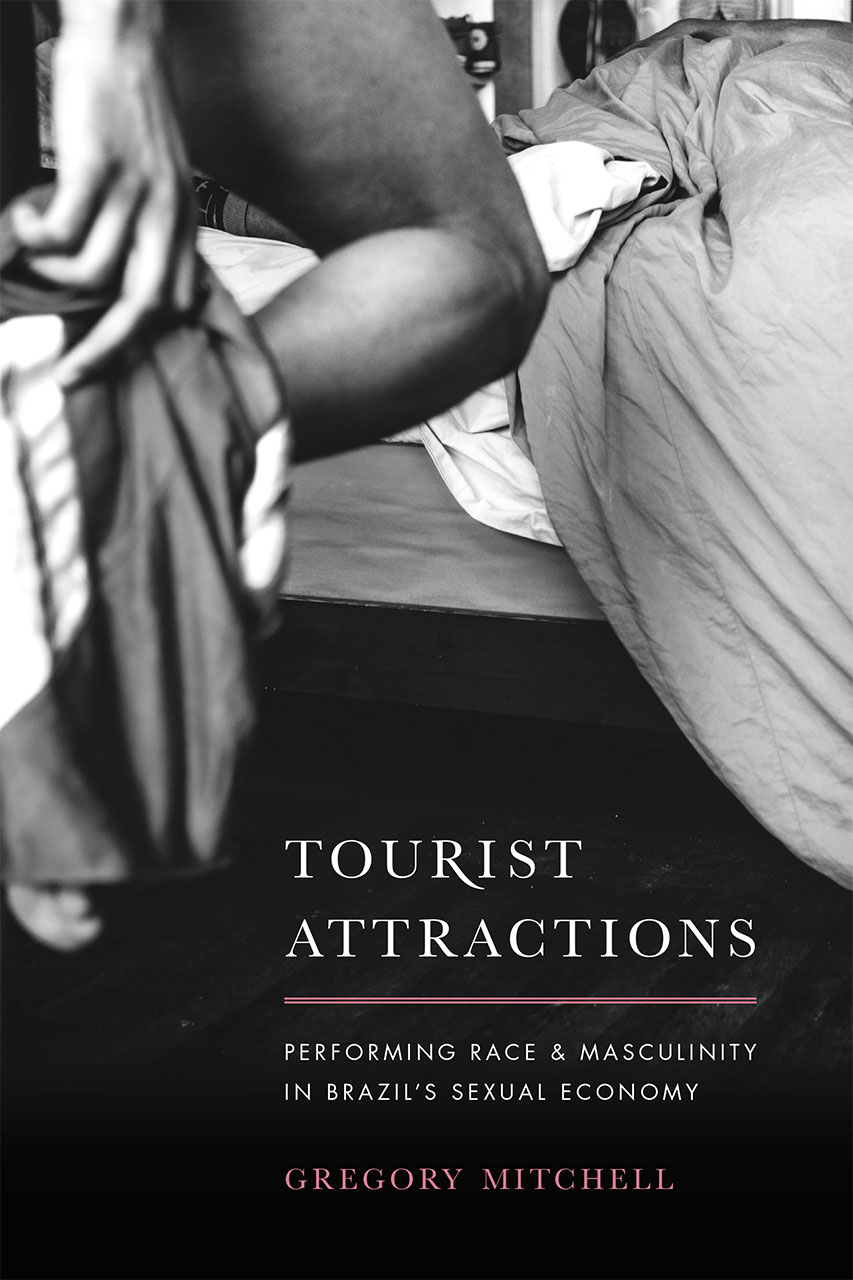 Tourist Attractions: Performing Race &
Tourist Attractions: Performing Race &
Masculinity in Brazil’s Sexual Economy
by Gregory Mitchell
University of Chicago Press. 274 pages, $30.
FOR ONCE, that pretentious concept dear to queer theorists—“performance”—seems apt. In Gregory Mitchell’s study of male sex workers in Brazil, the muscular machos for rent in certain saunas in Rio de Janeiro really are putting on an act, trying to match themselves to the fantasy that tourists from America and Europe have of Brazilian men. These fantasies are so demanding and romantic that, several chapters into this book, the reader begins to wonder if it might be best if all international travel were banned. The problem with that, however, is that tourism is now a huge industry, and gay tourism is an increasingly large chunk of it, particularly in Brazil.
On the plus side, working as prostitutes (or garotos de programa) gives poor Brazilian men a chance to make a lot more money than they would at any of the other jobs open to someone without education or mentors. On the minus side, gay Americans who visit Rio seem to want something quite contradictory: the experience of having sex with a heterosexual man, who they hope will eventually fall in love with them, which would mean the man is—what, gay?—something many American tourists are convinced the Brazilian machos really are but simply won’t admit. It’s the old irresoluble problem of homosexual desire, the one that writers from Proust to Reinaldo Arenas have pointed out: if your ideal is a heterosexual man, then why would such a man have sex with you? It’s not just the problem of Latin machismo; it’s the fact that heterosexuality is the gold standard of masculinity for many gay men. (Just browse the ads on Craigslist that ask for married, bisexual, or military men; what used to be called “straight acting” has always been based on the idea that the only real man is a heterosexual.) This desire leads to both hilarious and poignant observations by the Brazilians Mitchell interviewed over the course of ten years of visits to Brazil about their clients—Americans who run the gamut from men who want one-night stands to those who not only fall in love with the garotos but visit their families, help them with periodic financial transfers, and, in one case, pay for a luxury cruise around the world.
Rio is only the first city in which Mitchell talks to these male sex workers and their clients. He also takes us to the Amazonian city of Manaus, where one of eco-tourism’s subtexts is the possibility of sex with indigenous people. And then we go to Bahia, where gay African-Americans, drawn to candomblé (an Afro-Brazilian religion) and capoeira (a martial art with homosexual traditions), have been coming for years to get in touch with their Diaspora roots—the common African ancestry they imagine they share with dark Brazilians—whereupon the book gets even more amusing, because Brazilians do not like to assess themselves in terms of race, much less black versus white. They see themselves on a spectrum of colors and feel no bond whatsoever with affluent African-Americans—so when Harvard professor Henry Louis Gates Jr. declares in his documentary on blacks in Latin America, “But the good news is—we’re all black,” his remark could not be further from the truth.
This is an academic work, based on research and analysis, and it does contain jargon. But Mitchell’s education and training in ethnography allow him to place the sex workers and the gringos in a larger context and see them in a way that they cannot see themselves. And the rest of the writing is so good, so full of the ironies produced when gringo and garoto give their views of the sexual exchange that both unites and divides them—capoeira has even become a category of porn—that one puts up with the academic theorizing. And then there is Brazil. The opening paragraph of the chapter on eco-tourism is so evocative it makes one wish this sociological book had been written as a classic travelogue:
In Manaus, an industrial city of almost two million people located a thousand miles within the Amazonian rain forest, it rains almost every afternoon. People plan their daily schedules around this. “Let’s meet up tomorrow after the rain,” they’ll say. As I explored the dingy downtown, having what was supposed to be a bit of a respite from fieldwork, I realized I needed to hurry or I was going to get caught in the daily downpour. Everyone else seemed to know better and to have taken shelter, but there I was out in the open like the naïve tourist I was.
Mitchell, of course, is anything but a naïve tourist caught in the rain; indeed, he would probably never have gotten these young garotos to talk to him about their work if he had not been a professor working on a book. This is a well-written study that will interest anyone drawn to Brazil and its variously beautiful men—or anywhere else for that matter when your trip involves, intentionally or not, the exchange of money for sex. It is also a sad and funny look at the lengths to which desire will take us.






